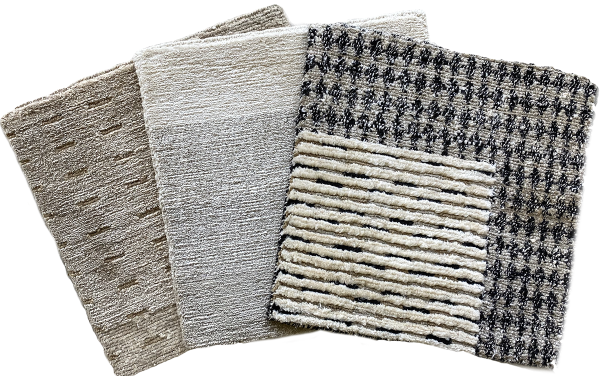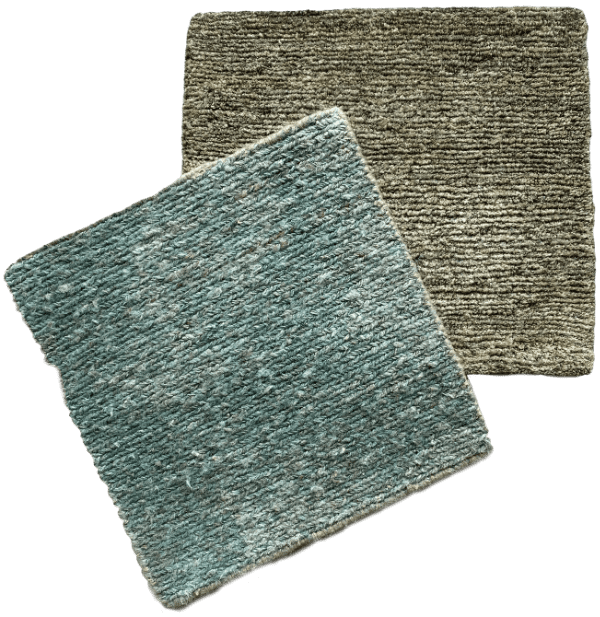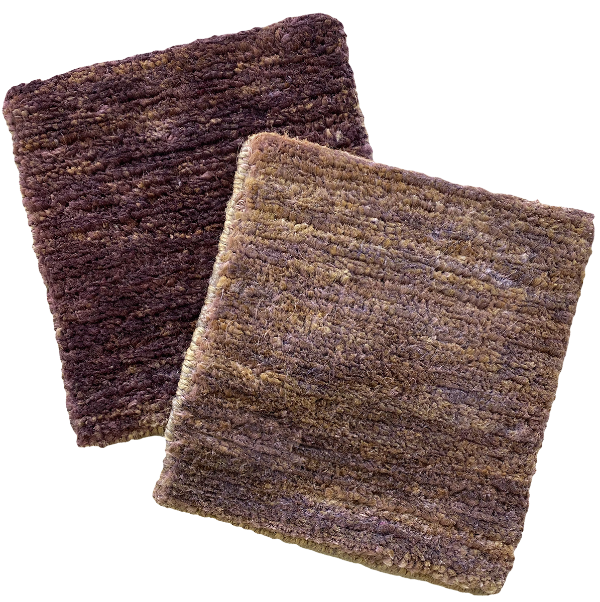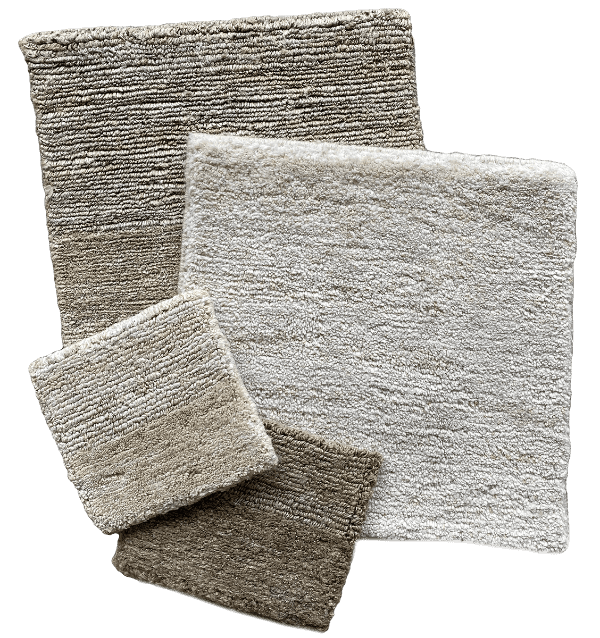We make beautiful rugs in a variety of fibers to suit different tastes, needs and budgets. Your NIBA rug consultant can explain the unique properties of each fiber and guide you to the right decision for your design project.
View Wool Fibers – View Shiny Fibers – View Outdoor Fibers
Linen
The strongest and finest of the vegetable fibers, linen has two to three times the strength of cotton. Our linen fibers from India and Nepal have a high luster, and their natural color includes shades of ivory, ecru, tan and grey. The longer and softer strands create the look of the perfect cross breed of hemp and silk. Because linen doesn’t stretch or “bounce back” as quickly as other fibers, it’s not recommended for high traffic areas.


Nepalese Hemp
Nepalese hemp comes from the cannabis sativa plant which grows in the foothills of the Himalayan mountains in Nepal. Hemp is strong and holds its shape, stretching less than other fibers. Hemp naturally softens over time. It doesn’t wear out, rather it “wears in.” Its natural color and texture ranges from very dark brown/black to greys, tans and golds. Hemp has a 10-15% variance on dye consistency.
Indian Hemp
Also referred to as jute, Indian hemp has a more brilliant sheen and softer hand than the Nepalese plant. Additionally, the natural tones of Indian hemp fibers are more dark brown than golden.


Allo
Allo grows wild in the high altitudes of the Himalayan Mountains in Nepal. Allo comes from the stalk of the giant Himalayan nettle plant, which grows to a height of 10 feet. Very durable and suitable for outdoor rugs, allo is naturally mildew resistant and ideal for hot and humid areas. Softer than hemp, Allo can be bleached into a bright powder white.
Sunpat
Sunpat comes from a small fibrous cactus that grows in the warmer Himalayan valley. What makes this fiber unique are its characteristic light and dark striations which give rugs an attractive abrash effect. Extremely durable, sunpat has more luster and softness than allo.



